Top accessibility testing tools for Product Owners include Axe and WAVE. These tools help ensure web content is accessible to all users.
Accessibility testing is vital for creating inclusive web experiences. Product Owners must prioritize accessibility to cater to diverse user needs. Tools like Axe and WAVE streamline the testing process, identifying and fixing accessibility issues efficiently. Axe offers browser extensions and integrations, making it versatile for various workflows.
WAVE provides visual feedback on web accessibility, highlighting areas needing improvement. These tools empower Product Owners to deliver compliant, user-friendly digital products. Ensuring accessibility not only enhances user satisfaction but also meets legal requirements, fostering a more inclusive online environment. Investing in these tools ultimately benefits both users and businesses.
Key Accessibility Tools
As a product owner, ensuring your product is accessible to everyone is crucial. Accessibility testing tools help make sure your product meets all necessary standards. This section will cover the key accessibility tools you need to know.
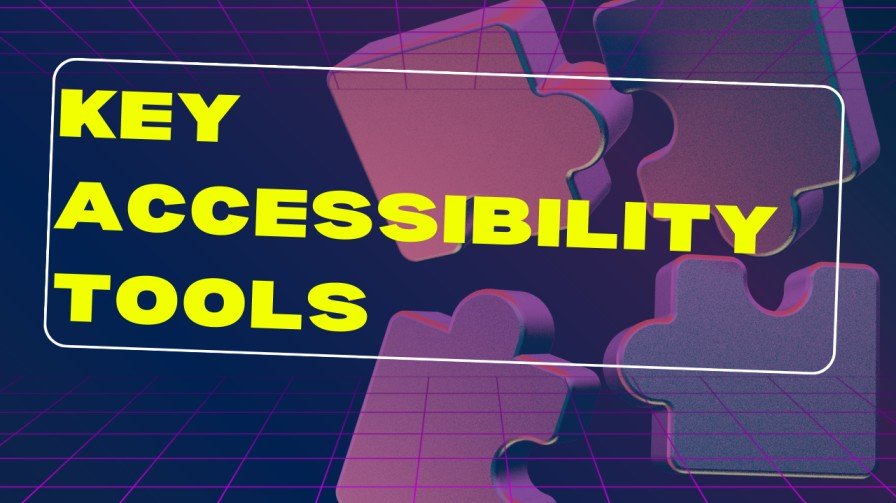
Automated Testing Tools
Automated accessibility testing tools are essential for quickly identifying potential issues in your product. These tools scan your website or app and highlight areas that may not meet accessibility standards. Here are some top automated testing tools:
- Axe by Deque Systems: This tool is available as a browser extension and integrates with development environments. It checks for common accessibility issues and offers suggestions for fixing them.
- Lighthouse: A Google tool that audits your app for performance, accessibility, and more. It generates detailed reports and scores your product.
- WAVE: This tool, developed by WebAIM, provides visual feedback on your web content’s accessibility. It highlights errors and offers guidance on resolving them.
Below is a table summarizing these tools:
| Tool Name | Features | Integration |
|---|---|---|
| Axe | Browser extension, development environment integration | Chrome, Firefox, GitHub |
| Lighthouse | Performance, accessibility audits, detailed reports | Chrome DevTools, CI, GitHub |
| WAVE | Visual feedback, error highlighting | Browser extension, API |
Manual Testing Tools
Manual testing tools are equally important. They allow human testers to identify issues that automated tools might miss. Here are some top manual accessibility testing tools:
- Screen Readers: Tools like JAWS, NVDA, and VoiceOver help testers understand how screen reader users will experience your product.
- Color Contrast Analyzers: Tools like the Contrast Checker by WebAIM help ensure your text is readable against its background.
- Keyboard Navigation Testing: Testing your product using only a keyboard ensures it’s accessible to users who cannot use a mouse.
Below is a table summarizing these tools:
| Tool Name | Features | Platform |
|---|---|---|
| JAWS | Screen reader, text-to-speech | Windows |
| NVDA | Screen reader, open-source | Windows |
| VoiceOver | Screen reader, built-in | Mac, iOS |
| Contrast Checker | Color contrast analysis | Web |
Using both automated and manual testing tools ensures your product meets accessibility standards and is usable by everyone. These tools are essential for any product owner aiming to create an inclusive product.
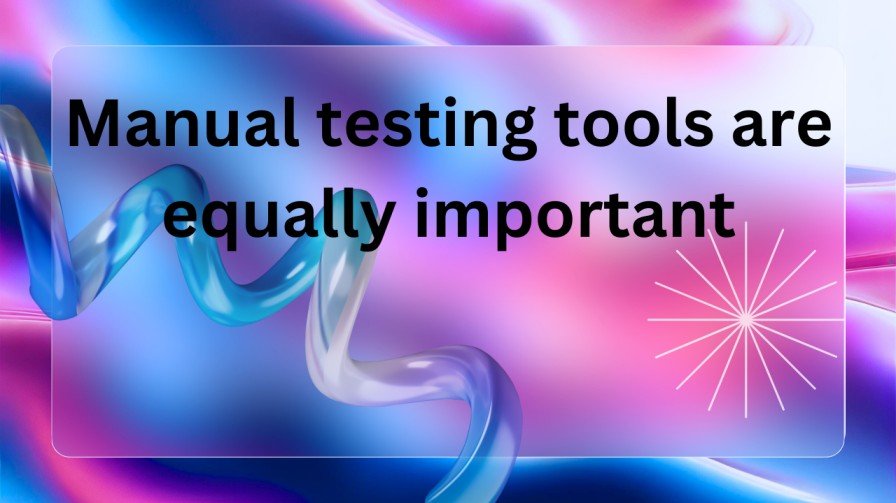
Popular Automated Tools
In today’s digital age, ensuring your website is accessible to all users is crucial. Product owners need robust tools to test and enhance accessibility. This section highlights some of the most popular automated tools that can help product owners achieve their accessibility goals efficiently.
Wave
WAVE (Web Accessibility Evaluation Tool) is a powerful and user-friendly tool for checking web accessibility. Developed by WebAIM, WAVE helps product owners identify accessibility issues directly within their web pages.
Key Features:
- Provide visual feedback on the accessibility of your web content.
- Highlights errors and offers suggestions for fixing them.
- Allows for real-time editing and testing.
WAVE is particularly valuable because it integrates seamlessly into your development workflow. Product owners can use the WAVE Chrome and Firefox extensions to test live web pages. This tool is not only comprehensive but also free to use, making it a top choice for many.
Here is a quick comparison table:
| Feature | Description |
|---|---|
| Error Identification | Highlights issues visually on the page. |
| Browser Extensions | Available for Chrome and Firefox. |
| Real-Time Testing | Allows for immediate feedback and fixes. |
| Cost | Free |
Using WAVE can significantly streamline the process of making your website accessible. It’s an essential tool for any product owner committed to accessibility.
Axe
axe by Deque Systems is another top-tier tool for automated accessibility testing. It is renowned for its comprehensive and accurate testing capabilities.
Key Features:
- Integrates with various browsers and development environments.
- Provides detailed issue descriptions and remediation guidance.
- Supports continuous integration and deployment pipelines.
Product owners can utilize the axe browser extensions to effortlessly test web pages. These extensions are compatible with both Chrome and Firefox. For users seeking more advanced capabilities, axe also offers enterprise solutions that provide enhanced integrations and support.
Comparison table of axe features:
| Feature | Description |
|---|---|
| Integration | Works with various browsers and development tools. |
| Detailed Reports | Offers in-depth analysis and fixes for issues. |
| CI/CD Support | Integrates with continuous integration systems. |
| Cost | Free and Enterprise versions available. |
axe is a versatile tool that suits both small projects and large-scale enterprise applications. It helps product owners ensure their websites meet the highest accessibility standards.
Manual Testing Essentials
As a product owner, it’s vital to ensure your web applications are accessible to all users. Manual testing plays a key role in this process, complementing automated accessibility tools. It helps uncover issues that automated solutions may overlook. The following are critical components of manual testing, with a focus on screen readers and keyboard navigation.
Screen Readers
Screen readers are essential tools for individuals with visual impairments, as they convert on-screen text into speech or braille. Testing your application with screen readers ensures accessibility for all users. Here are some key to you can consider:
- Install Popular Screen Readers: Utilize tools such as NVDA, JAWS, and VoiceOver. These are commonly used and provide various features.
- Check for Text Equivalents: Ensure all images include alt text. Screen readers use this to convey image descriptions.
- Form Labels: Verify that every form field has an associated label. This assists users in understanding the required information.
- Headings and Landmarks: Ensure proper structure of headings and landmarks to facilitate easier navigation.
- Live Regions: Use ARIA live regions to announce real-time updates, especially for dynamic content.
Testing with screen readers manually helps identify nuances and context that automated accessibility testing tools might miss. It ensures your application is usable for everyone.
Keyboard Navigation
Keyboard navigation is crucial for individuals who are unable to use a mouse.. Testing for keyboard accessibility ensures that your application is navigable using the keyboard alone. Here are some key aspects:
- Tab Order: Check the tab order. It should follow a logical sequence. Use the `tabindex` attribute to control tab order.
- Focus Indicators: Ensure focus indicators are visible. Users should see where they are on the page.
- Skip Links: Implement skip links to allow users to bypass repetitive content. This improves navigation efficiency.
- Interactive Elements: All interactive elements should be accessible via keyboard. This includes buttons, links, and form controls.
- ARIA Roles: Use ARIA roles to enhance accessibility. They help define elements and their states.
Manual testing for keyboard navigation is crucial. It ensures that users relying on the keyboard have a seamless experience. Automated accessibility testing tools cannot fully replace this process.
Browser Extensions
Product owners need top accessibility testing tools to ensure their websites are usable for everyone. One efficient way to do this is through browser extensions. These extensions make it easy to test and improve accessibility directly in your browser. They help identify issues and provide solutions to fix them. Let’s explore some top browser extensions for accessibility testing.
Lighthouse
Lighthouse is a powerful tool for product owners who want to improve their site’s accessibility. It is integrated into Google Chrome and offers a comprehensive audit of your web page. This tool is part of the Product Owner Top Accessibility Testing Tools and is available for free.
Key features of Lighthouse include:
- Automated accessibility testing to identify common issues
- Detailed reports that highlight areas for improvement
- Suggestions for best practices to enhance accessibility
Lighthouse provides a score for your site’s accessibility. A higher score means your site is more accessible. The tool also offers actionable advice to help you make improvements.
Here is a quick summary of its features:
| Feature | Description |
|---|---|
| Automated Testing | Scans your site for accessibility issues |
| Detailed Reports | Provides insights and recommendations |
| Free to Use | Available at no cost |
Using Lighthouse helps product owners ensure their websites meet accessibility standards. It is a valuable addition to your toolkit.
Accessibility Insights
Accessibility Insights is another excellent browser extension for product owners. Developed by Microsoft, this tool focuses on automated accessibility testing and offers both fast and comprehensive tests.
Accessibility Insights provides:
- FastPass for quick checks of common issues
- Assessment for a detailed analysis of accessibility
- Step-by-step instructions to fix identified problems
One of the standout features is the Ad-hoc Tools panel. This allows you to test individual elements on a page in real-time. You can also use the tool to simulate various disabilities, which helps in understanding how users with different needs interact with your site.
Here is a brief overview:
| Feature | Description |
|---|---|
| FastPass | Quick accessibility checks |
| Assessment | Detailed accessibility analysis |
| Ad-hoc Tools | Real-time testing of page elements |
Accessibility Insights is a robust tool for product owners. It helps ensure their websites are accessible to all users, making it a key part of the Product Owner Top Accessibility Testing Tools.
Mobile Testing Tools
As a product owner, ensuring your mobile app is accessible to everyone is crucial. Accessibility testing tools help identify and fix issues that may hinder users with disabilities. Mobile testing tools are essential for this purpose. Here, we’ll discuss two top tools: VoiceOver and TalkBack.

Voiceover
VoiceOver is a powerful screen reader built into Apple’s iOS devices. It allows visually impaired users to interact with their devices using gestures and spoken feedback. For product owners, this tool is indispensable for ensuring mobile apps are accessible. Here are some key features:
- Gesture-Based Navigation: Users can navigate their device using touch gestures.
- Spoken Feedback: VoiceOver reads out text, buttons, and other elements on the screen.
- Custom Actions: Developers can create custom actions for app-specific needs.
Using VoiceOver for accessibility testing can reveal crucial insights. For instance, it helps identify if buttons are properly labeled or if navigation is intuitive. The table below outlines the primary advantages:
| Feature | Benefit |
|---|---|
| Gesture-Based Navigation | Allows easy interaction for visually impaired users. |
| Spoken Feedback | Provides clear information about on-screen elements. |
| Custom Actions | Supports app-specific accessibility needs. |
Product owners can integrate VoiceOver into their testing strategy to enhance app accessibility. This tool is essential for those looking for Product owner top accessibility testing tools GitHub or free options.
Talkback
TalkBack is Google’s screen reader for Android devices. Similar to VoiceOver, it provides spoken feedback and allows users to navigate using touch gestures. For product owners, TalkBack is crucial for ensuring Android apps are accessible. Key features include:
- Touch Exploration: Users can explore the screen by dragging their finger.
- Spoken Feedback: TalkBack reads out text, buttons, and other elements.
- Customizable Gestures: Developers can customize gestures to fit app-specific needs.
Testing with TalkBack can highlight accessibility issues. For example, it helps determine if interactive elements are accessible and correctly labeled. Here’s a table summarizing its key benefits:
| Feature | Benefit |
|---|---|
| Touch Exploration | Allows users to explore the screen intuitively. |
| Spoken Feedback | Provides detailed information about on-screen elements. |
| Customizable Gestures | Supports app-specific accessibility needs. |
Product owners should make TalkBack a part of their testing toolkit. This tool is ideal for those seeking automated accessibility testing tools or product owner top accessibility testing tools free options. Integrating TalkBack can significantly improve the accessibility of Android apps.
Integration With Ci/cd
Product owners need top accessibility testing tools to ensure their products are inclusive and user-friendly. Integrating these tools with CI/CD pipelines can streamline the testing process, making it continuous and automated. This ensures that accessibility issues are detected and resolved early in the development cycle, saving time and resources.
Continuous Testing
Continuous testing is a key component of modern CI/CD pipelines. It allows for the frequent and automated testing of code changes, ensuring that accessibility standards are met at every stage of development. By integrating top accessibility testing tools, product owners can automate tests and receive immediate feedback.
Here are some benefits of continuous testing with accessibility tools:
- Early detection of issues: Catch accessibility problems before they become costly to fix.
- Consistent testing: Run tests consistently across all code changes, ensuring ongoing compliance with accessibility standards.
- Automated workflows: Reduce manual testing efforts and save time by automating repetitive tasks.
Popular tools for continuous testing include:
| Tool | Description | Free/Paid |
|---|---|---|
| Axe | Automated accessibility testing tool for web applications | Free |
| Pa11y | Scriptable accessibility testing framework | Free |
| WAVE | Suite of evaluation tools to help authors make their web content more accessible | Free |
By using these tools, product owners can ensure that accessibility testing is an integral part of their CI/CD pipeline, leading to more inclusive products.
Feedback Loops
Feedback loops are essential for improving product quality. In the context of accessibility testing, they provide critical insights into how well a product meets accessibility standards. Integrating feedback loops into CI/CD pipelines ensures that product owners receive timely and actionable information about accessibility issues.
Effective feedback loops involve:
- Immediate notifications: Get instant alerts for accessibility issues detected during testing.
- Detailed reports: Provide comprehensive information on the nature and location of issues.
- Prioritization: Help prioritize issues based on their impact on users.
Some tools that enhance feedback loops include:
| Tool | Description | Free/Paid |
|---|---|---|
| Lighthouse | Open-source tool for improving the quality of web pages | Free |
| Tenon | API-first automated accessibility testing tool | Paid |
| Deque DevTools | Accessibility testing tools for developers | Free |
Using these tools, product owners can maintain effective feedback loops, leading to continuous improvement in accessibility and overall product quality.
Best Practices For Testing
Accessibility testing ensures that your products are usable by everyone, including individuals with disabilities. For a Product Owner, top accessibility testing tools are essential to meet this goal. Adhering to best practices for testing can significantly enhance the user experience and compliance with accessibility standards.
User-centric Approach
A user-centric approach puts the needs and experiences of the end-users at the forefront. This strategy ensures that the product works well for everyone, including those with disabilities.
Here are some best practices for a user-centric approach:
- Conduct User Research: Understand the needs of users with disabilities by conducting thorough research.
- Create User Personas: Develop personas representing users with different disabilities. This helps in tailoring the product to meet their needs.
- Involve Users in Testing: Include users with disabilities in the testing process. Their feedback is invaluable.
Using Automated accessibility testing tools can help identify issues early. Tools like axe, WAVE, and tota11y are beneficial for this purpose.
| Tool | Features | Type |
|---|---|---|
| axe | Comprehensive accessibility checker | Automated |
| WAVE | Visual feedback on accessibility issues | Automated |
| tota11y | Interactive visual tool | Automated |
These Product owner top accessibility testing tools are also available on GitHub for easy integration into development workflows. Focus on usability and inclusivity to ensure a seamless user experience for all.
Diverse User Testing
Diverse user testing involves evaluating your product with a variety of users from different backgrounds and abilities. This practice ensures that the product is accessible to a wide range of users.
Here are some key points for diverse user testing:
- Recruit Diverse Testers: Ensure that your testing group includes individuals with different disabilities, such as visual, auditory, and cognitive impairments.
- Utilize Real-world Scenarios: Test the product in scenarios that users encounter daily. This helps identify practical issues that might be overlooked.
- Gather Feedback: Collect detailed feedback from testers about their experience and any challenges they faced.
Using Product owner top accessibility testing tools free can help in this process. Free tools like Google Lighthouse and Accessibility Insights provide valuable insights without additional costs.
| Tool | Features | Type |
|---|---|---|
| Google Lighthouse | Accessibility audits, performance checks | Automated |
| Accessibility Insights | Detailed accessibility evaluations | Automated |
These tools can be integrated into the development pipeline, ensuring continuous accessibility checks. Adopting these best practices will help you create inclusive products that cater to all users.
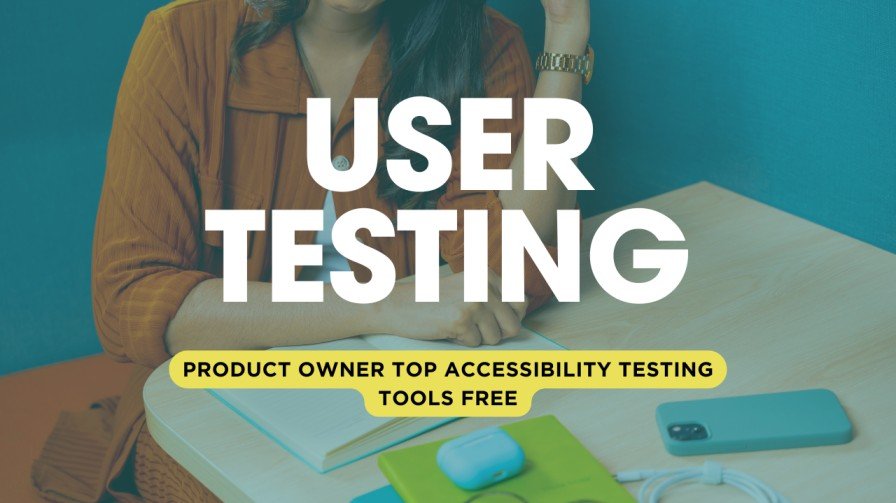
Emerging Trends
Accessibility testing tools are essential for product owners aiming to create inclusive digital experiences. Keeping up with the latest trends ensures your products are accessible to everyone. This section explores emerging trends in accessibility testing tools, focusing on AI and real-time testing.
Ai In Accessibility
Artificial Intelligence (AI) is revolutionizing accessibility testing. AI-driven tools can quickly identify and fix accessibility issues, saving product owners time and resources. By integrating AI, these tools offer more accurate and comprehensive testing.
- Automated accessibility testing tools powered by AI can scan entire websites in minutes.
- AI has the capability to foresee potential accessibility challenges in advance of their occurrence..
- Machine learning algorithms improve the accuracy of accessibility reports.
Product owners can utilize AI tools from platforms like Product owner top accessibility testing tools github. These tools can be customized to meet specific project needs, ensuring compliance with accessibility standards.
| Tool | Features | Platform |
|---|---|---|
| Accessibility Insights | AI-driven scans, comprehensive reports | GitHub |
| Axe | Automated testing, machine learning | GitHub |
These tools help product owners stay ahead by providing real-time updates and detailed insights into accessibility compliance.
Real-time Testing
Real-time testing is a game-changer for accessibility. It allows product owners to identify and address issues instantly. Real-time feedback ensures that accessibility problems are fixed on the spot, improving the user experience.
Product owner top accessibility testing tools free often include real-time testing features. These tools integrate seamlessly with development environments, offering instant accessibility checks.
- Real-time testing tools highlight issues as developers code.
- Instant feedback reduces the need for later revisions.
- Live previews show how changes impact accessibility.
With real-time testing, product owners can ensure their products meet accessibility standards during development. This proactive approach minimizes errors and enhances overall quality.
Tools like Automated accessibility testing tools offer real-time testing capabilities. They help product owners maintain high standards by providing continuous feedback throughout the development process.
Embracing these emerging trends in product owner top accessibility testing tools empowers product owners to create more accessible, user-friendly digital experiences.
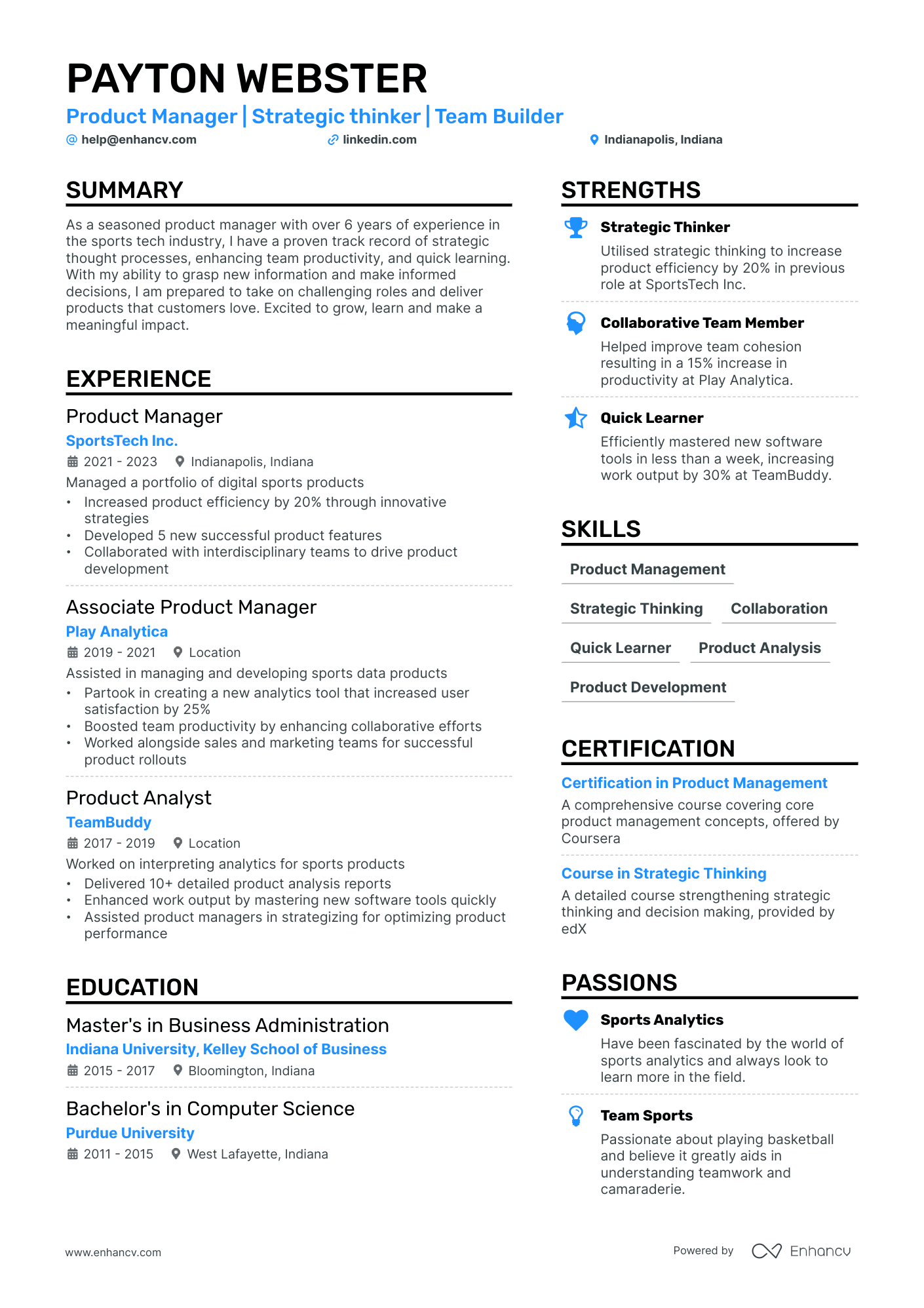
Credit: enhancv.com
Frequently Asked Questions
What Are The Top Accessibility Testing Tools?
Top accessibility testing tools include Axe, WAVE, and Lighthouse. These tools help identify and fix accessibility issues. They ensure your product meets WCAG standards.
Why Is Accessibility Testing Important?
Accessibility testing ensures all users can access your product. It improves usability for people with disabilities. It also assists in ensuring adherence to legal regulations.
How Does Axe Accessibility Tool Work?
Axe scans your product for accessibility issues. It provides detailed reports and recommendations. This helps you fix issues quickly and efficiently.
Can Wave Tool Improve Website Accessibility?
Yes, WAVE improves website accessibility by highlighting issues. It provides visual feedback and suggestions. This makes it easier to address accessibility concerns.
Conclusion
Selecting the right accessibility testing tools is crucial for Product Owners. These tools ensure your product is inclusive and user-friendly. Implement them to enhance your product’s accessibility and user experience. Stay ahead by regularly updating and refining your tools. Your commitment to accessibility will benefit all users and boost your product’s success.

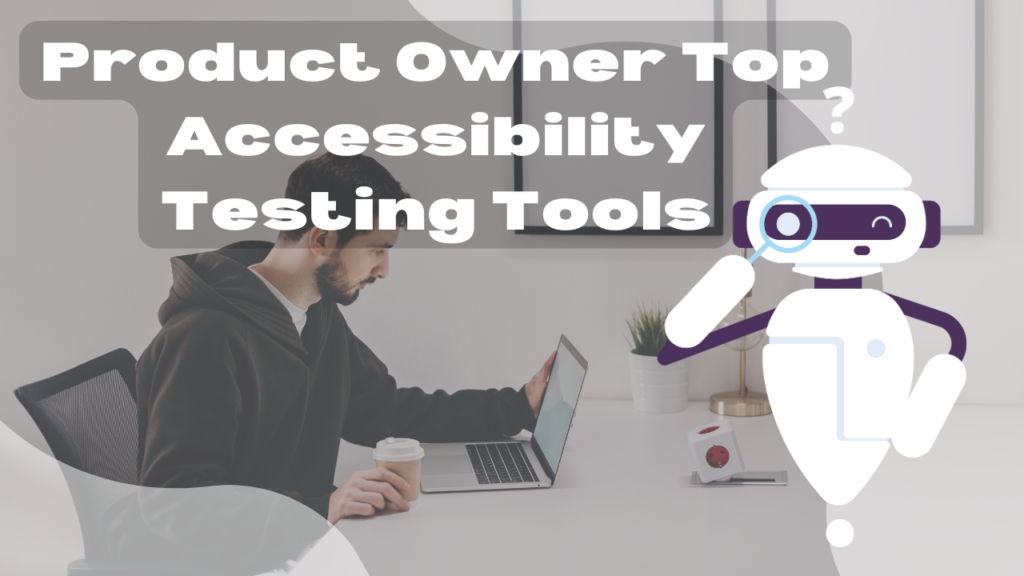

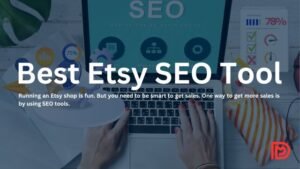
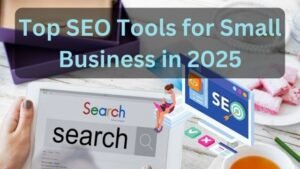
1 thought on “Product Owner Top Accessibility Testing Tools: Ultimate Guide”